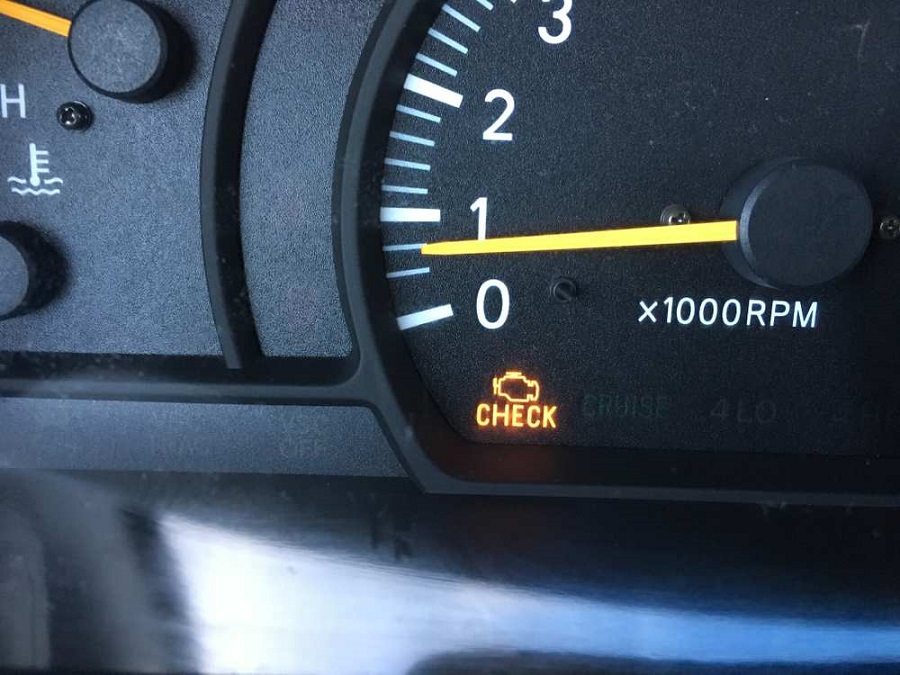The engine light on your car is not something to be taken lightly. It serves as a warning sign, indicating that there is an issue with your vehicle’s engine or related components. Ignoring the engine light can lead to further damage and potentially costly repairs. In this article, we will explore the causes of the engine light coming on, the potential consequences of ignoring it, and what steps you should take when faced with this situation.
Promptly addressing the engine light is crucial because it can indicate problems that, if left untreated, may lead to further damage or even breakdowns. Let’s delve into the common reasons for the engine light activation and what they signify.
Understanding the Check Engine Light
The check engine light is designed to monitor the performance and emissions of your car’s engine. When it detects a problem, it illuminates to alert you. It is important to note that the engine light does not necessarily indicate a catastrophic failure but signifies the need for attention.

Common causes of the engine light activation include:
Faulty Oxygen Sensor
The oxygen sensor measures the oxygen content in the exhaust gases, helping regulate fuel injection and emission control. A faulty sensor can lead to decreased fuel efficiency and increased emissions.
Loose or Damaged Gas Cap
A loose or damaged gas cap can cause fuel vapor leaks, disrupting the proper operation of the evaporative emission control system. This issue is relatively easy to address.
Malfunctioning Catalytic Converter
The catalytic converter plays a crucial role in reducing harmful emissions. If it malfunctions, it can affect engine performance and trigger the engine light.
Issues with Spark Plugs or Ignition Coils
Worn-out spark plugs or faulty ignition coils can lead to engine misfires, reduced power, and increased fuel consumption.
Problems with the Mass Airflow Sensor
The mass airflow sensor measures the amount of air entering the engine to determine the correct fuel-to-air ratio. Issues with this sensor can cause poor performance and increased emissions.
Faulty EGR Valve
The exhaust gas recirculation (EGR) valve helps reduce emissions by redirecting a portion of the exhaust gases back into the engine. A malfunctioning EGR valve can lead to rough idling, decreased fuel efficiency, and increased emissions.
Engine Misfire
An engine misfire occurs when one or more cylinders fail to ignite properly. This can be caused by various factors, such as worn spark plugs, ignition coils, or fuel injectors.
Understanding these common causes of the engine light activation will help you make informed decisions when addressing the issue. In the next section, we will discuss the effects of ignoring the engine light.
Common Reasons for Engine Light Activation
Ignoring the engine light can have several negative consequences. Here are some effects of neglecting the issue:
Potential Damage to the Engine
The engine light often signals a problem with critical engine components. Ignoring the issue can result in further damage, leading to costly repairs or even engine failure.
Reduced Fuel Efficiency
Many engine light issues, such as faulty oxygen sensors or misfiring cylinders, can negatively impact fuel efficiency. Ignoring these problems can lead to increased fuel consumption and higher costs at the pump.
Safety Concerns
Certain engine light issues can affect the overall performance and safety of your vehicle. For example, a misfiring engine may cause sudden power loss, compromising your ability to accelerate or maintain speed.
To avoid these adverse effects, it is essential to take immediate action when the engine light comes on. In the following section, we will outline the steps you should follow when faced with this situation.
What to Do When the Engine Light Comes On
Discovering the engine light illuminated on your car’s dashboard can be unsettling. However, it is crucial to remain calm and take the following steps to address the issue effectively:
Remain Calm and Observe the Vehicle’s Behavior
When the engine light comes on, pay attention to how the vehicle is performing. Are there any noticeable changes in engine noise, vibrations, or power? Understanding the behavior of your car can provide valuable information to the mechanic or dealership.
Check for Loose Gas Cap
One of the simplest reasons for the engine light activation is a loose or damaged gas cap. Before visiting a mechanic, ensure that the gas cap is securely tightened. If it appears damaged, consider replacing it with a new one.
Visit a Trusted Mechanic or Dealership
For most engine light issues, it is best to seek professional help. A trusted mechanic or dealership will have the expertise and diagnostic tools to accurately identify and resolve the problem.
Utilize Diagnostic Tools
If you have access to an onboard diagnostic system (OBD-II) scanner, you can use it to retrieve the trouble codes stored in your car’s computer. These codes can provide valuable insights into the specific issue causing the engine light to come on.
In the next section, we will discuss the process of diagnosing the issue and the common engine light problems you may encounter.
Diagnosing the Issue
Diagnosing the cause of the engine light activation requires a systematic approach and, in some cases, professional assistance. Here are the methods commonly used to identify the problem:
Onboard Diagnostic System (OBD-II)
The OBD-II system is a standardized diagnostic interface found in most modern vehicles. It provides access to the vehicle’s computer system, allowing the retrieval of trouble codes and monitoring of various engine parameters.
Professional Diagnostic Equipment
In more complex cases, professional mechanics may use advanced diagnostic equipment to pinpoint the exact cause of the engine light activation. These tools provide detailed information and help guide the repair process.
Seeking Professional Help
While DIY diagnosis is possible for some engine light issues, it is often advisable to seek professional assistance. Mechanics have the knowledge, experience, and equipment necessary to diagnose and resolve complex problems accurately.
In the next section, we will address some common engine light issues and discuss potential solutions.
Addressing Common Engine Light Issues
Depending on the cause of the engine light activation, different solutions may be required. Here are some common issues and their corresponding remedies:
Oxygen Sensor Replacement
A faulty oxygen sensor should be replaced to restore proper fuel efficiency and reduce emissions. This relatively simple repair can be performed by a mechanic.
Gas Cap Replacement
If the issue is a loose or damaged gas cap, replacing it with a new one will solve the problem. Gas caps are inexpensive and widely available.
Catalytic Converter Repair or Replacement
A malfunctioning catalytic converter may need to be repaired or replaced, depending on the extent of the damage. This is a more involved process and often requires professional assistance.
Spark Plug or Ignition Coil Replacement
Worn-out spark plugs or faulty ignition coils can cause engine misfires. Replacing these components can restore engine performance and fuel efficiency.
Mass Airflow Sensor Cleaning or Replacement
If the mass airflow sensor is dirty or malfunctioning, it may need to be cleaned or replaced. This ensures accurate measurement of airflow and optimal engine performance.
EGR Valve Cleaning or Replacement
A clogged or malfunctioning EGR valve can cause various engine issues. Cleaning or replacing the valve will help restore proper operation.
Troubleshooting Engine Misfires
Engine misfires can have multiple causes, including worn spark plugs, faulty ignition coils, or fuel injector problems. Diagnosing and resolving these issues may require professional expertise.
By addressing these common engine light issues promptly, you can ensure the continued performance and longevity of your vehicle. However, prevention is always better than cure. In the next section, we will discuss some essential maintenance tips to avoid engine light problems.
Maintaining Your Vehicle to Avoid Engine Light Issues
Regular maintenance and care play a crucial role in preventing engine light problems. Here are some tips to keep your vehicle running smoothly:
Regular Maintenance Schedule
Follow the manufacturer’s recommended maintenance schedule for routine inspections, fluid changes, and component replacements. This ensures that your vehicle receives timely attention and reduces the risk of unexpected issues.
Keeping Fluids at Appropriate Levels
Check and maintain proper fluid levels, including engine oil, coolant, transmission fluid, and brake fluid. Low or contaminated fluids can lead to engine problems and trigger the engine light.
Timely Repairs and Replacements
Address any issues or abnormalities promptly. Ignoring small problems can lead to more significant and costlier repairs down the line.
Paying Attention to Unusual Sounds or Behaviors
Be attentive to any unusual sounds, vibrations, or behaviors exhibited by your vehicle. These can be early indicators of potential engine problems.
By following these maintenance tips, you can reduce the likelihood of engine light activation and ensure a smoother driving experience. Now, let’s conclude our article.
Conclusion
The engine light on your car is a valuable warning system that should not be ignored. It signifies potential issues with your vehicle’s engine or related components. Understanding the common causes and effects of the engine light activation empowers you to take appropriate action.
When the engine light comes on, remain calm, check for simple solutions like a loose gas cap, and visit a trusted mechanic if needed. Professional diagnostic tools and expertise can help accurately diagnose and address the problem. Regular maintenance and timely repairs are key to preventing engine light issues and maintaining your vehicle’s performance.
Remember, your car’s engine light serves as a reminder to take care of your vehicle’s health. So, listen to what it’s trying to tell you and give your car the attention it deserves.
FAQs
1. Why did my engine light come on suddenly?
The engine light can come on suddenly due to various reasons, such as a loose gas cap, a faulty sensor, or a more significant engine issue. It is advisable to have it checked by a professional to determine the exact cause.
2. Can I continue driving with the engine light on?
While you may be able to continue driving with the engine light on, it is not recommended. Ignoring the issue can lead to further damage and potentially costlier repairs. It’s best to have it addressed promptly.
3. Can a low battery cause the engine light to come on?
A low battery alone is unlikely to cause the engine light to come on. However, it can affect the overall electrical system of the vehicle, which may trigger the engine light. It’s best to have it checked by a professional.
4. How much does it cost to fix an engine light issue?
The cost of fixing an engine light issue can vary depending on the specific problem and the vehicle’s make and model. It is advisable to consult a mechanic or dealership to get an accurate estimate.
5. How long can I drive with the engine light on?
There is no specific timeframe for how long you can drive with the engine light on. However, it is recommended to have it addressed as soon as possible to avoid potential damage and costly repairs.





